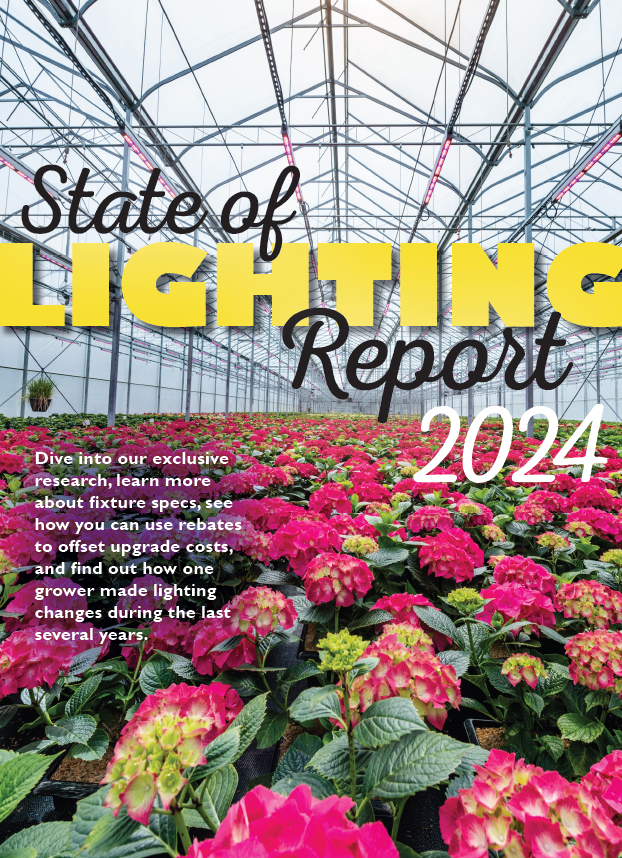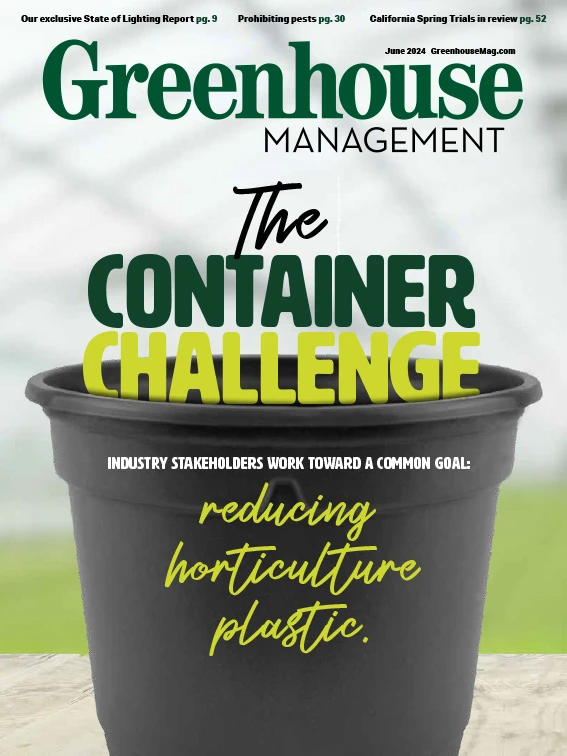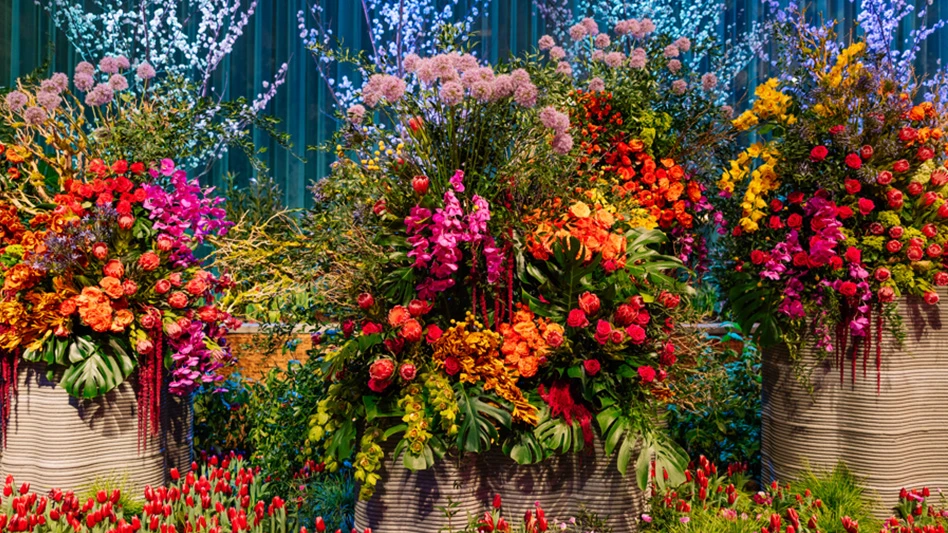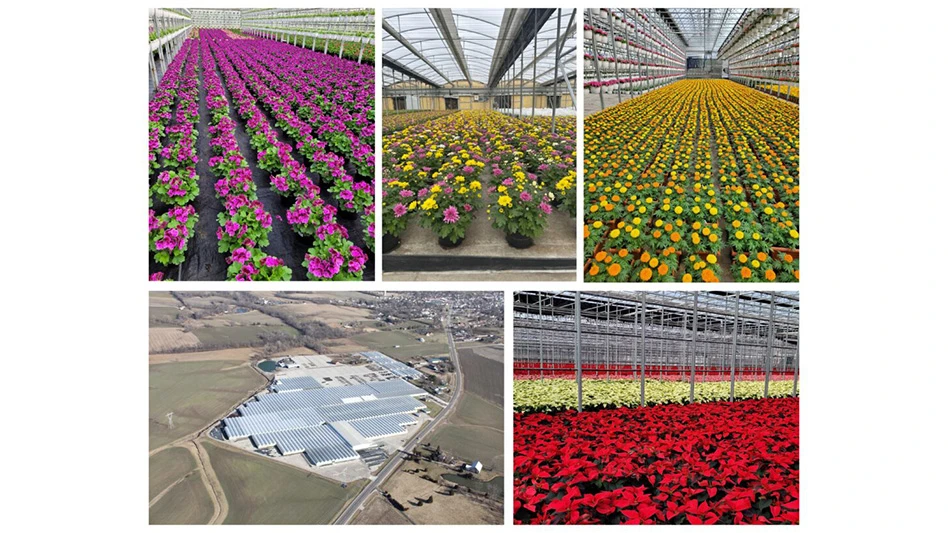
Mounting demand for locally grown food and a projected 70% increase in food production needs by 2050 necessitates rapid, scalable adoption of agricultural solutions that are both practical and sustainable.
Expanding at an annual compound rate of 24% globally and predicted to hit $3 billion in the US this year, the controlled environment agriculture (CEA) market is an attractive candidate to meet this demand. CEA’s benefits include more efficient use of water and higher yields per unit of area — pluses for the environment and the bottom line. However, adding artificial lighting to the equation can impact both the sustainability and economics of a CEA facility.
A January 2024 U.S. Department of Agriculture study noted that “the primary concern of indoor farms is the energy cost, specifically lighting needed to grow crops.” And, since horticultural lighting is among the fastest growing segments of electric load for many utilities, this is a concern for the grid as well. To address this, the U.S. Department of Energy has recommended that the nation’s growers transition their lighting to all LED technology, a move projected to reduce electricity usage by 34% and costs by approximately $350 million annually.
Like other LED fixtures, horticultural LEDs are long-lasting and super-efficient. As the CEA industry has moved toward more energy-efficient practices, LED-based horticultural light has emerged as a neat solution — with some state codes requiring LEDs and others offering incentive programs through electric utilities to encourage use of products above certain efficacy ratings.
The DesignLights Consortium (DLC), a nonprofit dedicated to reducing energy use, associated carbon emissions and light pollution through quality lighting and controls, maintains a list of more than 800 horticultural lighting products deemed rebate eligible through independent efficacy, quality and safety testing. Conforming with the DLC’s Horticultural Technical Requirements, products on the Horticultural Qualified Products List (QPL) are more than 35% more efficient than the next-best non-LED option (the 1000W double-ended high pressure sodium luminaire). By year’s end, products on the QPL are expected to encompass at least 90% of the overall non-residential LED-based horticultural lighting market.

Considerations for LED lighting upgrades
While greater efficiency is a constant feature across all kinds of LED products, there’s a lot more involved for horticultural lighting — largely because there’s a lot at stake to ensure this specialized segment of the LED market meets the specialized needs of end-users. Different lighting spectra, for example, can influence factors as diverse as plant rooting, growth rate, flowering and leaf color.
In addition, horticultural lighting must meet UL standards for safety issues that are unique to indoor cultivation environments. Fixtures manufactured for CEA also must emit light that falls within the photosynthetically active radiation (PAR) wavelengths that are conducive to effective plant growth and take into account specific spectral effects that vary by individual crop. Plant canopy height within the facility and compatibility with HVAC and shading systems to meet overall temperature and humidity needs, as well as unintentional light pollution from greenhouse lighting, are among additional considerations.
Notwithstanding differences among cultivation facilities and processes, there are some fundamental questions all facility operators should consider before purchasing and installing horticultural LEDs, such as:
- What is the correct intensity of light for my plants?
- How much light do my plants need throughout the day?
- What spectrum of light will work best for my plants?
- Should I replace my existing high-pressure discharge (HID) lamps one-to-one with LEDs?
- How will LEDs affect my HVAC or dehumidification process?
- What are the options for managing fixture heat besides passive cooling?
- Are LEDs safe for employees to work around?
- What are the benefits of horticultural lights that offer ultraviolent or infrared as part of their output?
- How does spectral tuning affect plant growth?
- How do I know if I need supplemental lights for my greenhouse?
- Can I automate my auxiliary lights to achieve optimal daily light integral (DLI) — light received from all sources, sunlight and supplemental?
- What advanced lighting control methods might benefit my facility?

Lighting tools for growers
With so much to consider, the DLC’s Horticultural QPL is a useful tool for taking the guesswork out of the product selection process in terms of the quality, efficacy and safety of listed fixtures. It provides rated spectral intensity for all listed products, for example, as well as information about fixture cooling methods and spectral tuning (a control feature that allows some fixtures to change their spectral output).
Importantly, since inclusion on the DLC’s Horticultural QPL requires third-party testing to validate conformity with UL safety standards and performance criteria — including damp-location rating and energy efficiency — CEA operators can be sure that listed luminaires are not just safe and effective, but also eligible for cost-saving utility rebates and incentives.
Accessing the QPL to browse and compare products is easy. Simply create a free MyDLC account, log on and select “Find Products.” Effective March 31, 2024, Version 3 of the DLC’s Horticultural Technical Requirements now displays additional useful information on the specific type of CEA application listed fixtures are intended for, as well as controllability information, dimensions and product images.
The DLC’s horticultural lighting program will continue to update its technical requirements as we aim to keep pace with industry developments and grower needs. We recently announced the appointment of a Horticultural Lighting Controls Technical Working Group comprising cultivators, lighting manufacturers, lighting controls and sensor manufacturers, engineering/design/construction consultants, nonprofits and researchers to help us expand the role of connected and integrated lighting solutions that enhance both energy use and crop production.
As the horticultural lighting market expands, growers will increasingly need high-quality products with reliably vetted performance claims. By streamlining the process of exploring and comparing fixture options, the DLC’s Horticultural Lighting QPL can save growers time and money, improve crop yields and contribute to the sustainability of indoor agriculture.
For more: designlights.org


Explore the June 2024 Issue
Check out more from this issue and find your next story to read.
Latest from Greenhouse Management
- GIE Media Horticulture Group wins five regional 2025 Azbee Awards of Excellence
- Terra Nova Nurseries introduces rust-free and disease-resistant heucherella
- John T. Nickel, founder of Greenleaf Nursery Co., passes away at 89
- Three tours offered at 2025 Farwest Show
- Garden Media Group announces sixth annual Women in Horticulture Week
- Star Roses and Plants announces National Knock Out Rose Day
- The Growth Industry Episode 4: How federal budget cuts are affecting horticulture nonprofits
- Green Gear: Greenhouse tech for predicting weather and nutrient analysis





